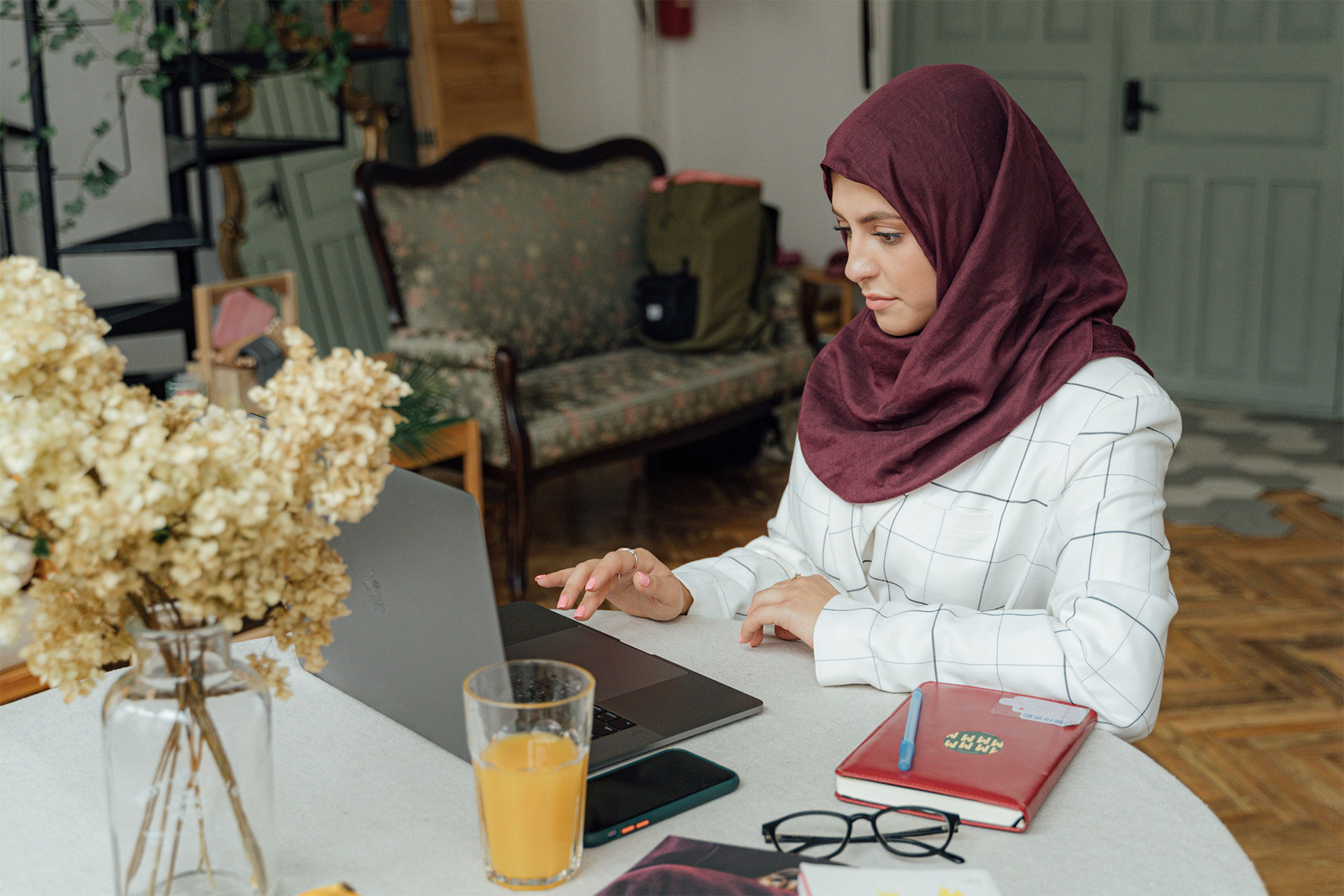How to work from home effectively
As modern offices and work become more digitised, the option of working from home is more popular with workers all over the world. According to Global Workplace Analytics, 5 million people are working from home in the US alone, at least 50% of the time. While many work from home by choice, making a sudden transition to working at home without preparation can be daunting, or even disruptive. If you’re preparing to set up a home office soon and become a remote worker, it’s vital that you get started on the right foot.
On paper, the perks of working from home can sound like a dream. You get to ditch the commute, work in your pajamas and eat lunch whenever you like. Telecommuting and WFH veterans, however, know that the reality is nowhere near as relaxing or decadent. It can be a real struggle to find the same rhythm of work at home that you’d find the office. You might not even have an actual desk in your house, or you find yourself easily distracted by pets, family members – and laundry! It can also be really difficult to unplug from work when you work from home. That’s because working from home can have a psychological impact on your life as your home becomes inextricably linked with work. With the right habits, however, you can ensure that you excel at working from home while keeping your home life separate.
Create work and non-work spaces
First and foremost, you need the right workspace. While lounging in bed on a laptop might sound attractive, not having the right work environment can really impact your focus. Designate a specific space in the house to be your dedicated office space, where you can truly focus or get into deep work. This could be as simple as a corner of a bedroom or even a seat at your kitchen table that you don’t typically sit in. Whatever it is, it should be a spot that you wouldn’t usually use while at home, so that you can psychologically connect that space with a work mentality rather than simply relaxing at home. This can be a big help when it comes to sitting down and getting into the flow, and also with putting work aside at the end of the day.
Make sure you’re equipped
Equipment can often be an afterthought until the day you’re stuck on the sofa with just your laptop, and a bunch of tabs or documents open on one screen. When working from home, you need a technical setup that allows you to work the way that you usually would at the office. Whether it’s an extra screen, a separate mouse and keyboard or even just a proper desk, having the right tools is essential. If you’re going to work from home regularly, it’s in your employer’s best interest that you’re equipped to do so.
Check your employer’s work from home and equipment policy and make sure you have everything you need. While your needs will vary depending on your role, it may be worthwhile to check if any of the following will be necessary in your day-to-day function, and if you can access them at home:
- Monitors
- Mice
- Keyboards
- Display Cables/Adapters
- Privacy Screens
- Headphones
- Laptop stands
- Chargers
- Ergonomic chair
Keep in mind that this also includes having the right files and internet connection. If you’re not able to access your company’s network from home for any reason, you still need to be able to work. With files stored in Dropbox, you can easily work remotely offline because you can select files to be stored in local and cloud storage. When you do go offline, your files will be there ready for you to work on, and they’ll also be synced with the online versions once you’re connected again. You won’t have to worry about being without connection, even if it means there's one less excuse to finish early.
Keep your work schedule
Once you’ve got your home office setup, it's time to get to work. A common mistake when you start working at home is you might choose to swap your commute time for some extra sleep. The thing is, rolling out of bed and straight into work can be quite jarring. To get off to a good start, make sure you get ready just as if you were heading into the office – even it’s a casual day. When you establish rituals to get you in and out of work mode – the same way that a commute would prepare you for the day ahead – you become mentally ready. And if you plan it right, you can take some quality time for yourself with a walk with your coffee (or your dog) before settling down to tackle your day in your home workspace.
Take breaks
Once you’re in the flow, you should also make sure you take breaks. Regular days in the office are peppered with much needed trips to the break room for coffee, catch-ups with colleagues at their desks and other light distractions. While you’ll likely be taking trips to the kitchen for coffee and snacks, it’s too easy to fall into a design of working continuously without downtime when you work from home. Even if your focus might be improved by working from home without others around, you still need the extra time to take breaks and relax – and you should take those breaks.
End the working day
Critical to working in the home office is being able to leave your work at the end of the day. While it may seem like working from home may tip your work life balance in favour of life, it can often have the opposite effect. Once you can work effectively at home, you need to ensure that you’re able to disconnect from work. Set a defined time to end your work hours, just like you’d have in the office. It’s the same as starting your day: you need a ritual to help you settle down and get out of work mode. Light exercise or reading are common methods for winding down but make sure you find what works best for you. This is crucial, not only to relax and recover before the next day’s work, but for you to enjoy a healthy, personal life that’s wholly separate from work.
How to stay connected to your team remotely
Even if you and your team are all working from home, it’s important to stay as connected and on-the-ball just as if you were in the office. Many people are already accustomed to working with remote employees or colleagues in different offices or locales and are aware how important strong communication is for remote teams. For other people, though, working from home can get lonely. Once the novelty of not having to go to the office wears off, it can often mean spending a lot of time by yourself – or sharing work space with family. It’s vital that you keep looking for innovative ways to communicate with your team in an effective way but also that’s effective for your particular circumstance.
Use shared tools to work together
The best way to work closely with your colleagues—while apart—is to work using digital tools. By working in shared, smart workspaces, everyone on your team can work together directly while staying in the loop on projects. In Dropbox Paper, you can share documents with your team and work on them together online without having to email or merge files. If something needs to be done, you can simply mention one of your team members in a relevant part of the document to notify them. It’s a simpler, more effective, way to stay connected with your team and collaborate better—both in or out of the office. Plus, it's a great way to reduce meetings and emails.
Turn meetings into videoconferences
While working from home will certainly cut a lot of unnecessary meetings out of your schedule, it can make the ones that matter more challenging, too. Some conversations have historically been better had face-to-face than a phone call, and there can also be subtle interaction or nuance that’s missed when working from home. Using video conferencing, however, can really help bridge that gap. Whether it’s an all-company meeting or a project sync with a colleague, video makes meetings more effective and keeps you visually and audibly connected to your team. With apps like Zoom integrated in Dropbox, it’s easy to set up video conferences or use them as a regular part of your usual work. If someone wants to quickly discuss something on a document, you can request and start Zoom calls with them directly from Dropbox.
Use communal chat channels
We all know that technology makes it natural for members of your team or parts of your organisation to keep to themselves – whether they’re in the office or not. One way to encourage and improve communication is to use office instant messaging software, like Slack. While it helps create a sense of urgency regarding communications between individual team members, it also opens up new opportunities to communicate and socialise with other colleagues. Using Slack with Dropbox, you can set up unique channels with team members, the entire office or for your after work happy hour team – it’s up to you.
Say more, not less
When you aren’t constantly running into teammates in the hallways or at lunch, there’s a lot of valuable social interaction that’s suddenly gone. The best way to accommodate the lack of physical communication in the office is simply to communicate more while you’re not there. Go out of your way to schedule check-ins with your team members to talk through current projects – using tools like Slack and Zoom. And keep in mind, it doesn’t always have to be work – don’t be afraid to just get in touch socially with colleagues online as you would in the office. Most office instant messaging software feature emojis and GIF keyboards to help make your conversations a little more light-hearted. In Dropbox, you can even use emojis in documents to add warmth and personality to your chats.
The joys of working from home
While it can seem daunting for some at first, there's a reason why so many people are already choosing to work from home today. There’s no commute, the schedule’s flexible, and you can enjoy the freedom of being in your own home, with more time for you and your loved ones. The best part? With the right approach and tools, it’s not hard to tap into what makes it so attractive to so many telecommuters. With a proper home working environment and strong connections with online colleagues, the transition to working from home can be a simple and enjoyable one – one you may not want to give up.




